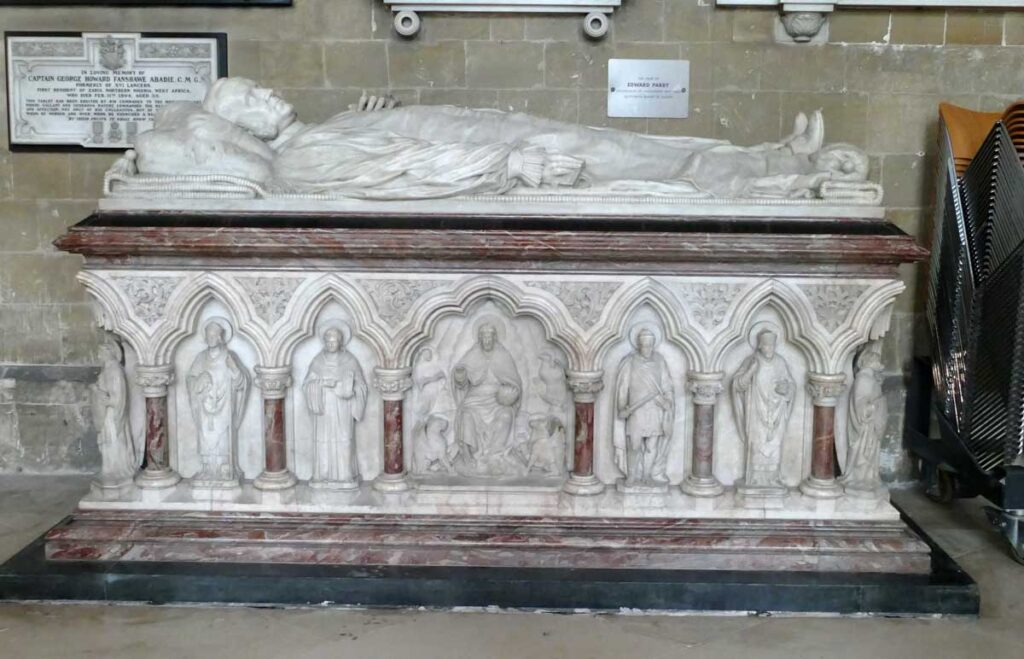Bishop of Dover and Archdeacon and canon of Canterbury (1870-1889).
Sculptor: James Forsyth (1891)
This monument is still in excellent condition with Parry’s effigy recumbent upon a tomb chest. The effigy, weepers and side panels are all carved from alabaster. What, however, stands out on the monument is the generous use of a predominantly red-pink stone for the table top and plinth of the tomb chest and for the several decorative columns set into the side panels. This stone is one of the Devonshire Marbles, called Red Ogwell (there is also a Pink Ogwell) and was extracted from the Ogwell Marble Quarries, near Newton Abbot in Devon.

Rocks of the Ogwell beds were part of a marine carbonate mud-mound with inclined flanks. The sediments were laid down in a coral sea during the Upper Devonian, some 380 million years ago. The stone is strictly speaking a limestone and several fossils can be seen and identified including pieces of crinoid (a marine animal, sometimes called a sea lily), numerous brachiopods (see the top of the column nearest to the wall and facing west) and several tabulate colonial corals. There are several stylolites (irregular dissolution features producing rough jagged lines) cross-cutting the stone.
Products made of polished stone from the various quarries in South Devon were shown at the Great Exhibition in 1851 and led to their rise in popularity and, soon after, the area around Torquay became an important centre for stone working. The various marbles from these quarries can be seen as architectural features in many important Victorian buildings around the country and were used to manufacture a wide range of portable wares including tables and boxes. The quarries producing decorative stone gradually declined in production during the 20th century following rising costs of extraction and transportation and competition from less expensive European marbles.
